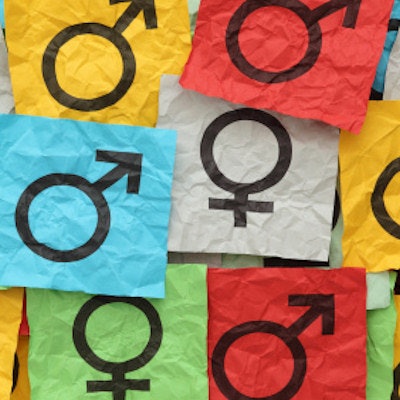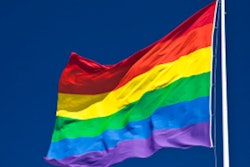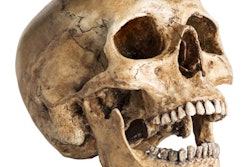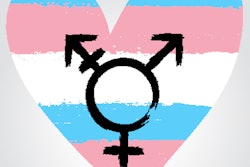
Do you feel well-prepared to treat your patients who identify as lesbian, gay, bisexual, transgender, and queer (LGBTQ)? Has your educational training provided you with adequate knowledge and tools? If not, you're far from alone. A new study found at least one dental school's training on treating these patients to be insufficient and recommended improved interprofessional content in this area.
Researchers surveyed more than 1,000 dental, medical, and nursing students at a U.S. university about their training, comfort, and attitudes related to treating LGBTQ patients, and the group published its findings in PLOS One (September 20, 2018).
Only 13% of dental students agreed that their curriculum incorporated LGBTQ-related content, and just 25% said their instructors demonstrated competence in this area, which was lower than reported by other healthcare profession students. In addition, dental students displayed more stereotypical and less positive attitudes toward LGBTQ individuals.
"National dental education organizations should identify and name relevant LGBTQ health topics, and schools of dental medicine should outline specific curricular goals related to LGBTQ health," wrote the authors, led by Madelyne Greene, PhD, a postdoctoral trainee in reproductive and population health in the obstetrics and gynecology department at the University of Wisconsin School of Medicine and Public Health in Madison.
Assessing preparedness
Previous research has indicated that LGBTQ individuals have more difficulty accessing medical care and maintaining good health, with some patients reporting that they delay or avoid care because of discrimination or lack of awareness on the part of providers. Some discrepancies between the ability of these patients to obtain care compared with other individuals are at least in part a result of bias by and lack of training of providers, the authors wrote.
“The inclusion of LGBTQ healthcare topics in dental curricula is important for various clinical skills.”
Dental practitioners should be knowledgeable about caring for LGBTQ patients, including the use of preferred names and pronouns, recognition of family structures, and familiarity with pharmacologic agents these patients may use, such as gender-affirming hormone therapy, and their possible side effects in the oral cavity, they noted. However, studies suggest that dental schools are not preparing students well, with few hours of related curriculum.
The researchers conducted the current study to learn more about LGBTQ curricula and attitudes across medical disciplines. They developed a 12-question survey that was completed by more than 1,000 dental, medical, and nursing students at the University of Pennsylvania in Philadelphia in 2014.
More than 120 dental students responded (24%). Just under half of the dental students identified as female, compared with 88% of the nursing school and 62% of the medical school respondents. The percentage who identified as LGBTQ was 17% of both dental and nursing students and 9% of medical students.
The researchers identified a number of significant differences in survey responses between the dental students and the medical and the nursing students. Among the results, dental students reported both less interest in LGBTQ-specific training but greater comfort in treating LGBTQ patients (see table below).
| Survey responses with significant differences between dental students & other students | |||
| Survey item | Dental students (n = 127) |
Medical students (n = 495) |
Nursing students (n = 388) |
| "I feel comfortable discussing sexual health with my patients." | 52% | 79% | 76% |
| "My instructors demonstrate competency in caring for LGBTQ patients." | 25% | 46% | 59% |
| "My school/program has incorporated LGBTQ related content into a variety of courses." | 13% | 58% | 55% |
| "I can tell if my patient is lesbian, gay, bisexual, or queer by looking at them." | 6% | 3% | 3% |
| "I can tell if my patient is trans or gender noncomforming by looking at them." | 12% | 4% | 5% |
| "I am comfortable treating lesbian, gay, bisexual, and queer patients." | 92% | 83% | 86% |
"These seemingly contradictory findings may also reflect the misconception that LGBTQ-specific training is not relevant to or required for high-quality dental practice," the authors wrote.
According to the researchers, dental practitioners should possess the following skills:
- Be aware of and able to address healthcare barriers commonly experienced by marginalized populations.
- Understand the effects of relevant medical history or medication use on dental care and screen for oral infections and diseases for which parts of the LGBTQ population may be at high risk, including oral lesions resulting from sexually transmitted infections and complications of health disparities, such as decreased healthcare usage and increased substance abuse.
- Elicit relevant information by asking appropriate questions and speaking knowledgeably about sexual health with all patients.
Interprofessional learning
The researchers noted the following limitations to their survey:
- A relatively low response rate among dental students
- Use of convenience sampling
- Possible reluctance of respondents to honestly express negative attitudes about LGBTQ individuals
- Possibility of greater survey response from LGBTQ individuals or those more knowledgeable about related healthcare issues
- Use of a student population that may not be representative of other dental, medical, and nursing students throughout the U.S.
However, the authors noted that the results emphasized the importance of interprofessional learning and resource sharing of LGBTQ-related content between health professional disciplines and schools.
They recommended that healthcare training programs foster inclusive environments and include distinct LGBTQ-related topics in healthcare training programs.
"This content should be evidence-based and should avoid further stigmatization of LGBTQ people while addressing difficult and sensitive topics through contextualization," the authors concluded.



















